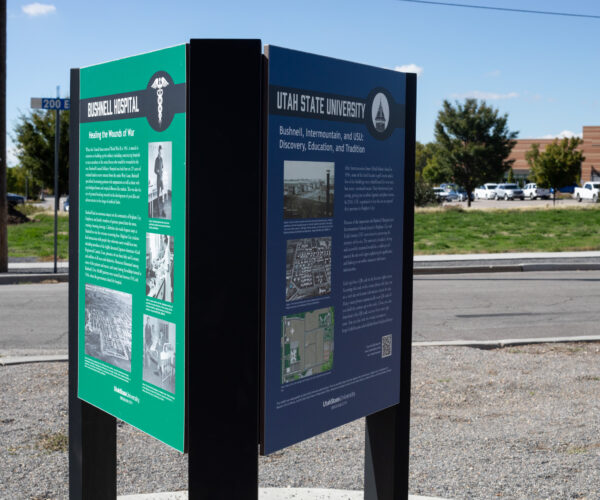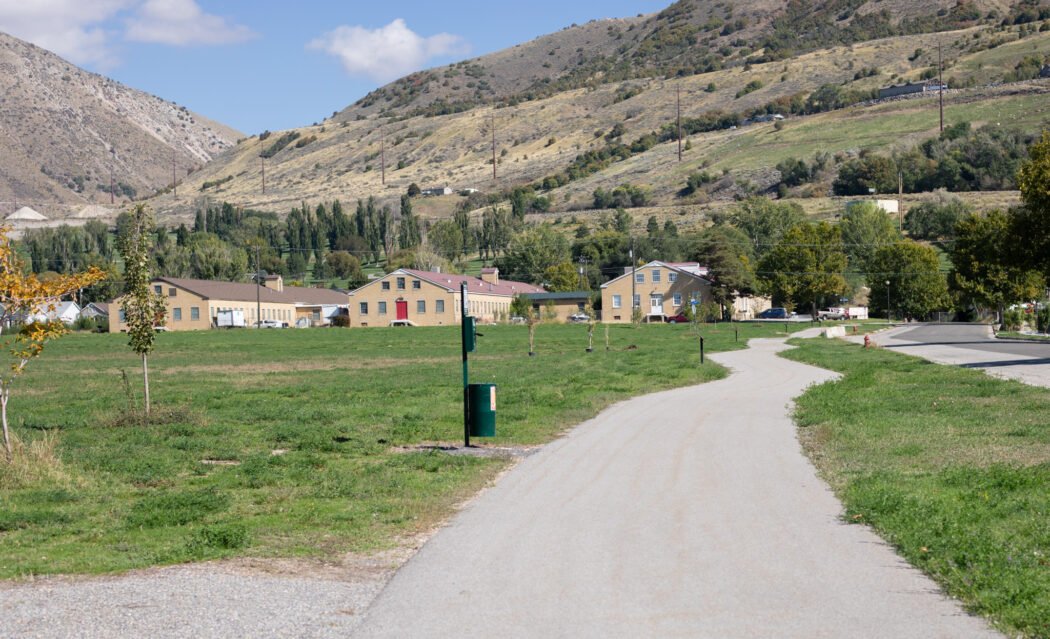Brigham City campus uses trail to promote wellness, commemorate past
Of Utah State University’s 30 different campuses across the state, each has its own unique history and the Brigham City location is no exception.
The campus resides on land that formerly hosted the Bushnell General Military Hospital and Intermountain Inter-Tribal School. USU has since built a commemorative walking trail and virtual museum to ensure the historical context of the land is not forgotten.
The hospital was built on 295 acres of land and served World War II veterans from across the entire west coast. It specialized in treating amputees while also seeing soldiers suffering from psychological issues and certain tropical diseases like malaria. Over 10,000 patients were treated at the hospital between 1942 and 1946 before the government closed the hospital.
After the war, the hospital was then transformed into a tribal school. When the school was first opened in 1950 it was referred to as the Intermountain Indian School, but the name was changed in 1974. Before the name change, primarily Navajo students attended but beginning in the 1974-75 school year, students from other tribes attended as well.
Over 20,000 students attended the school during its history before it was closed in 1984 by the Bureau of Indian Affairs due to internal budget cuts and concerns about the school’s distance from the students’ homes.

A sign at the beginning of the Brigham City Historic Trail located right outside USU Brigham City. (Photo/ Heidi Bingham)
After the closing of the school some of the buildings were repurposed, but many remained vacant and were a hazard to the community. Former dean and executive director of the Brigham City campus, Tom Lee, was instrumental in helping the university create the walking trail that resides there today.
“When USU bought the land there were still 18 buildings on the property and they were all in terrible shape,” Lee said. “They had been vacant for 30-plus years and had been broken into and vandalized. They were in such disrepair, it wasn’t feasible to restore them.”
After removing the remaining buildings, the university decided that it still wanted to commemorate the history of both the hospital and the school. Originally, campus leaders discussed building a museum, but realized it was unrealistic. USU librarian Todd Welch had another plan.
“Todd had done projects like this before where you have a virtual museum,” Lee said. “So you have a walking trail, with signage containing links to online information about what was there originally.”
The Brigham City Historic Trail opened on July 13, 2019 to commemorate the school and hospital. It also serves as a place for students to practice mental and physical wellness.
“We hoped that it would be a place that students could enjoy just, you know, having a place to go out and take a walk for 20 minutes as well as just being informative about the history of the area,” Lee said. “A lot of the students at the Brigham campus are not from Brigham City.”
Dan Black, associate vice president at USU Brigham City, attended the ribbon-cutting. In a press release by Utah State Today, Black expressed he was proud to be a part of the event.
“The trail ribbon cutting, in conjunction with the Intermountain Indian School reunion, was a great way to honor the past and remember how the lives of both soldiers and students were shaped on these grounds,” he said.
In the same press release, Lee pointed out how each of the three institutions that existed in the area were dedicated to improving people’s lives.
“It took courage and persistence for the wounded veterans who came to Bushnell Hospital, and the Native American children and youth who came to IMS, to take advantage of the services, training and education needed to move ahead in their lives,” Lee said.
The trail stretches three-quarters of a mile and includes 20 signs taking participants through the history with QR codes to the virtual museum.
Most importantly the trail represents the relationship USU has with the communities in which all of its campuses reside.
“Brigham City was a great support with getting the new building and developing that site there,” Lee said. “We want to be good neighbors and good community members.”

